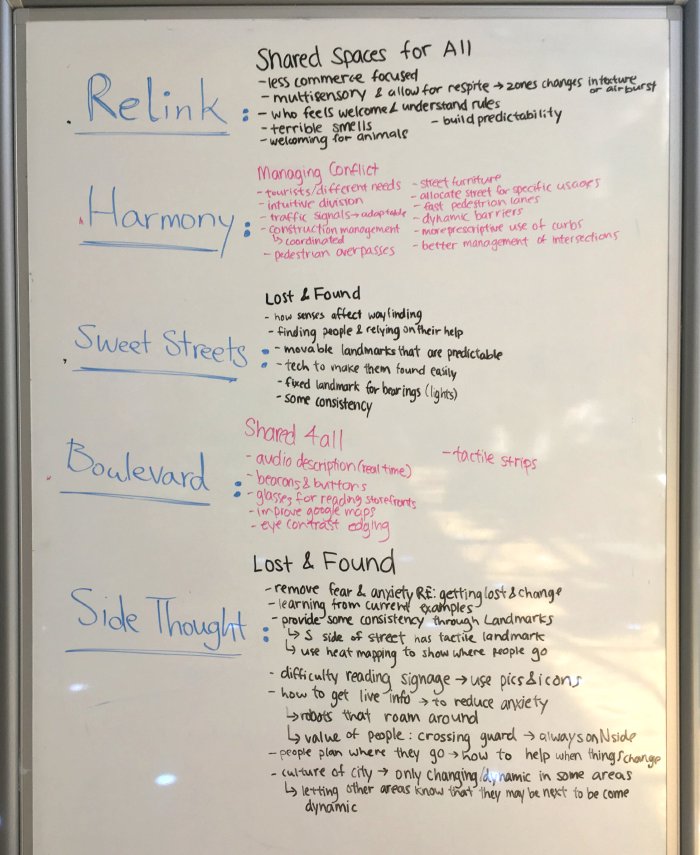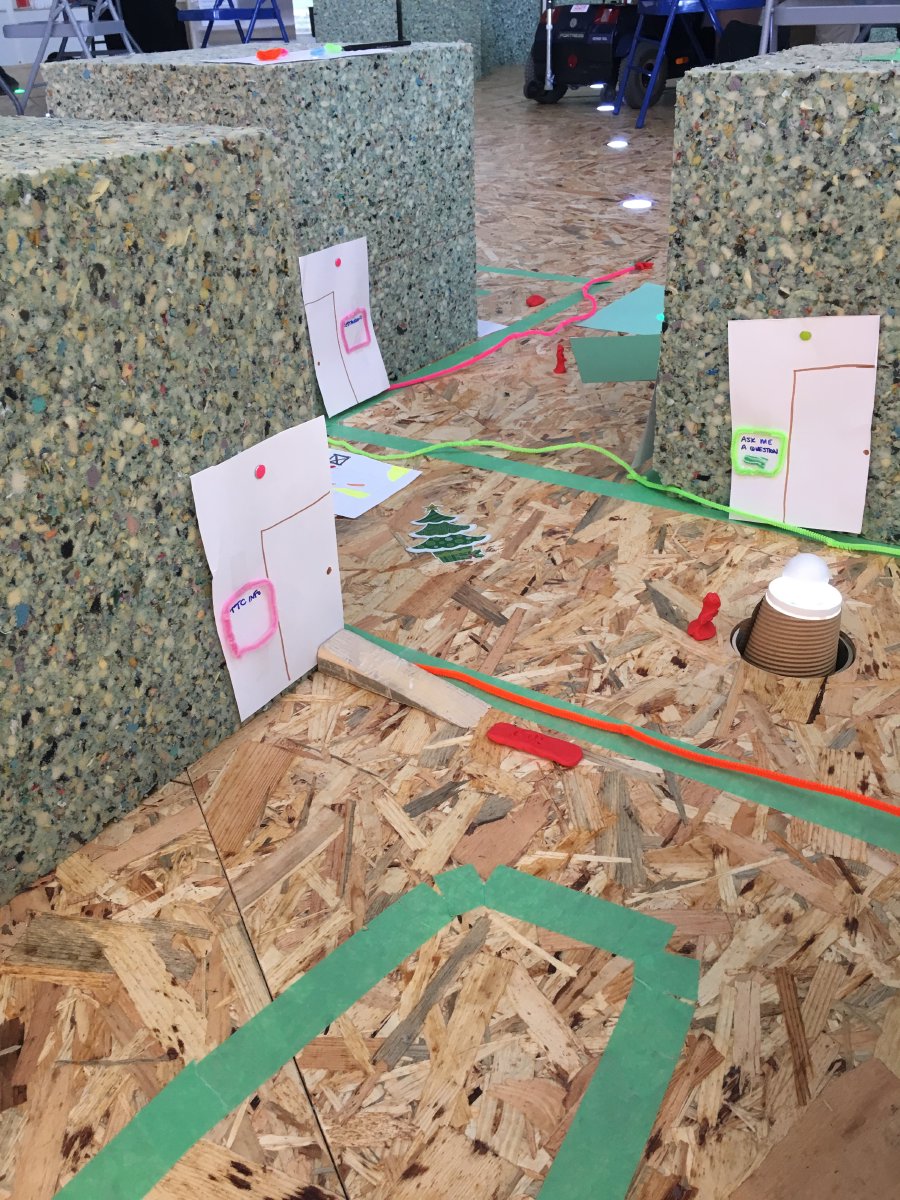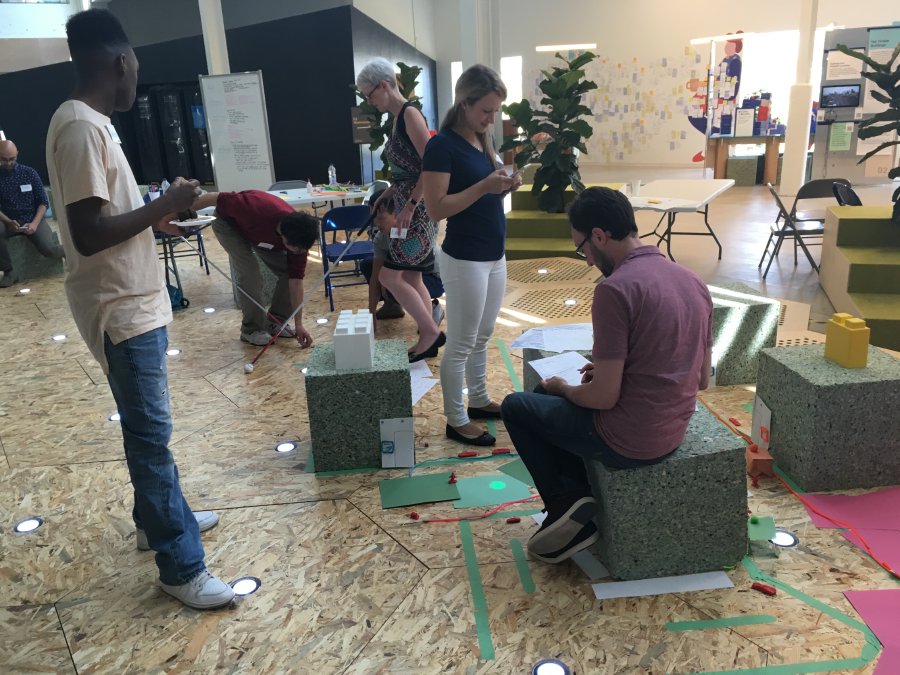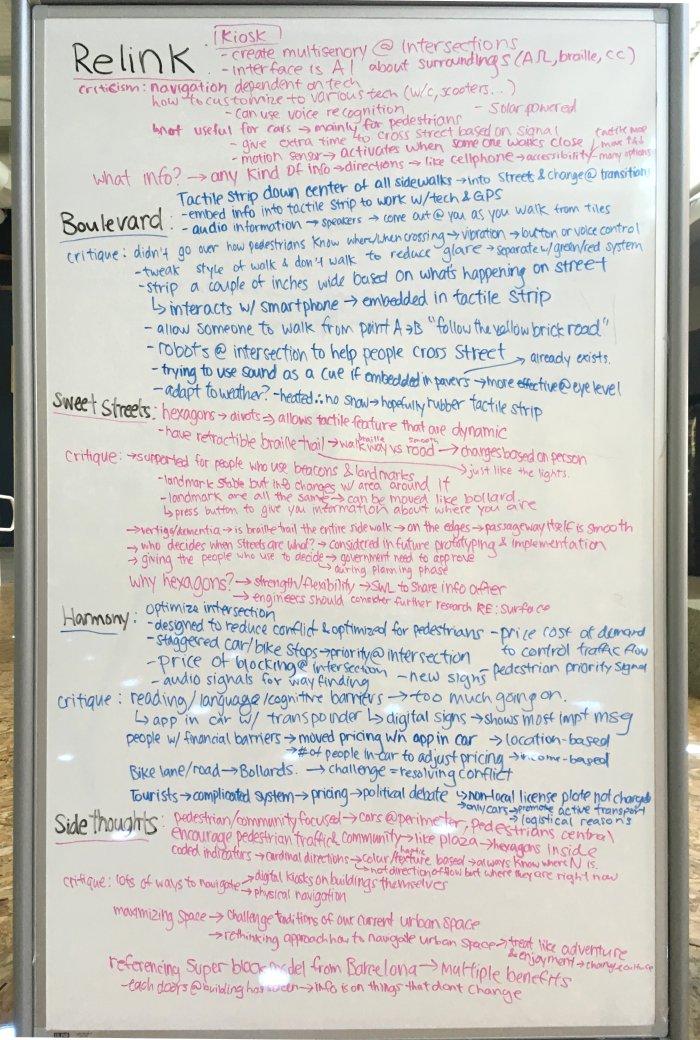Co-design Session #2: Dynamic Streets
Update October 18, 2018: The Co-design Session #2 Synthesis Report is now available.
The second of three co-design sessions was held on August 24th at the Sidewalk Labs office at 307 Lakeshore Boulevard East, Toronto. The session began at 9:20 am and ended around 5:00 pm. Five IDRC members and one accessibility consultant from Sidewalk facilitated a group of 20 people from the Greater Toronto Area participating in this collaborative event. The focus of the second session was dynamic streets. Thus, the planned activities for the day encouraged participants to reflect on their personal experiences on the streets of Toronto in relation to three main themes and think about how their experiences can be used to inform the streets of the future. The three themes focused on issues of wayfinding and orientation, co-existing within a dynamic space with competing needs, and envisioning a city that meets the needs of all its users.
Warm-Up Activity: Share one word that you associate with “street”
Objective: encourage reflection on personal experiences
Duration: 15-20 minutes
The day began with a warm up activity. In this activity, the participants sat in a large circle and took turns introducing themselves and sharing one word that comes to mind when they think of streets, and give a brief explanation for their word choice. This activity was tailored to the participating group and allowed participants with visual impairments to participate by reducing visual input. In addition to breaking the ice, the activity provided an opportunity for participants to learn how others experience streets, and to become aware of how their perspectives may be at conflict with one another.
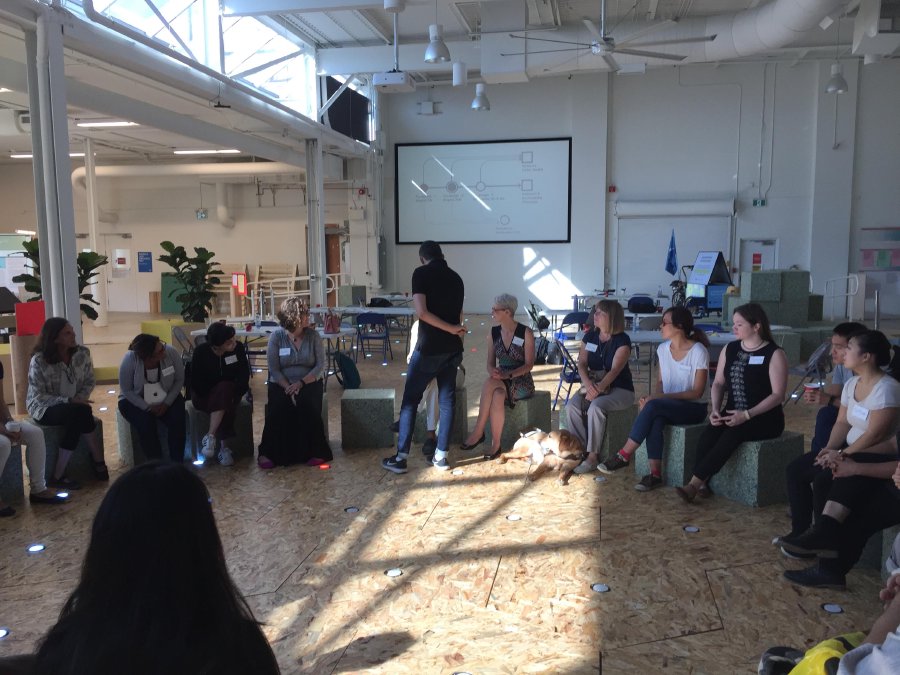
Introducing the Dynamic Street Prototype: Sidewalk Labs
Following the warm up activity, Jesse Shapins from Sidewalk Toronto provided an overview of the dynamic street prototype at the session’s venue, and talked about the broader implications for the city of Toronto. He described the four key components of the street design: modular, dynamic, heated, and permeable. Jesse and other representatives from Sidewalk Toronto also answered questions from the participants regarding the material used for the street, the technology, and the goals of this approach to street design.
Introducing the themes for the session:
After experiencing the dynamic street prototype, the following themes were introduced to the audience. Each participant was assigned to a group to work on one of these themes for the rest of the session.
- Co-existing: managing conflicting needs in shared spaces
"We all have different needs, and in many situations our needs conflict with the needs of other people around us. In an environment where we have some control over our surroundings, how can we manage this conflict? What mechanisms should be in place to allow us to better share spaces and accommodate many?"
- Lost and Found: wayfinding and orientation in dynamic spaces
"Finding your way in a city can be challenging as it is, but what if the environment keeps changing? In this theme you will explore how dynamic spaces add a layer of complexity to wayfinding, and what navigation methods we can use in these situations."
- A city working for everyone: Shared spaces that are perceivable, operable, and understandable for all.
"Perceivability, operability and understandability are core principles when it comes to making web content more accessible and inclusive, but we can also apply these to create more inclusive spaces and streets. What aspects of our streets would benefit most from being perceivable, operable and understandable to a broader range of citizens?"
Design Activity: Part 1 - Group Discussion
Objective: Discussing each theme based on personal experiences
Duration: 30 minutes
Step one and step two of the design activity included questions that encouraged participants to reflect on their personal experiences and share their perspectives to build a common understanding of their theme.
Below are the questions asked in step one and step two for each theme:
Co-existing:
- Step One: As a group discuss and list when your needs conflict with other street users: (e.g. bikers, slow walkers, etc.)
- Step Two: As a group discuss what aspects of the street led to those conflicts.
Lost and found:
- Step One: Think about how you would navigate a space that keeps changing, such as a dynamic street. (come up with as many ideas as possible)
- Step Two: As a group think about the situations when you got lost: (What caused you to get lost? What wayfinding mechanisms failed you?).
A city working for everyone:
- Step One: As a group discuss and list what aspects of the street work for you, and why: (Think about your personal experiences)
- Step Two: As a group discuss and list what aspects of the street do not work for you, and why not.
Design Activity: Part 2 - Prototype Challenge
Objective: Brainstorming ideas and prototyping a solution.
Duration: 2 hours
After sharing personal experiences relevant to the theme assigned to their group, each group was given a challenge related to their theme to resolve. Groups first had 30 minutes to brainstorm a pool of ideas to address their challenge. The challenges for each theme are presented as below:
Co-existing:
- Challenge: Think about different ways to address conflicts in shared spaces. (How would you prioritize needs? How would you create spaces that address multiple needs simultaneously?)
Lost and found:
- Challenge: Think about how you would navigate a space that keeps changing, such as a dynamic street.
A city working for everyone:
- Challenge: Think about how you can make aspects of a shared street that are more perceivable, operable and understandable to a broader range of people.
As the groups engaged in discussion, the assigned facilitator provided insight and guided the discussion to reflect each theme. Each group then had the opportunity to briefly share their ideas with the larger group and received feedback before continuing on to the next part of the activity.
Image description for the group discussion whiteboard
Following the brainstorming session, each group had 1.5 hrs to select one idea and explore different ways to prototype their idea to make it a reality. Some groups chose to create three dimensional models using the physical space, while other groups created drawings or completed a write-up of their design. The following images are examples of prototypes created by the groups.
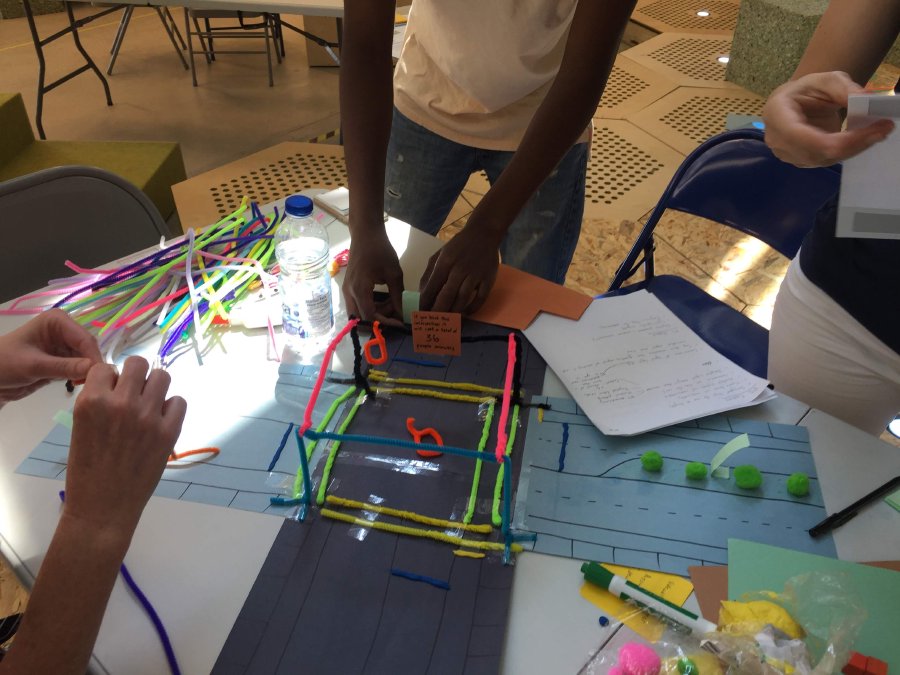
Design Activity: Part 3 - Swap and Critique prototype
Objective: Considering unrepresented needs
Duration: 30 minutes
After each group finished prototyping their selected ideas, they swapped a written description of their idea accompanied by other built artifacts with another group, so the other group could critique their proposed solution from the inclusion and accessibility point of view. Each group was provided with the following questions to reflect on their peer’s work:
- Who is excluded by this idea?
- Who is supported/enabled/empowered by this idea?
- What are the advantages of this idea?
- What are the disadvantages of this idea?
Once groups completed their critique, they returned the worksheets to the original groups. Each team then had half an hour to review the feedback they received and revise their prototype.
Final Group Discussion
For the last hour, each group shared their work with the rest of the teams in an open discussion. Teams were engaged in active discussion and questions when presenting each idea.
At the end of the session, participants were asked to complete a feedback form in order to assess their experience through the day and inform IDRC how they can improve their future co-design sessions. The results from this session are available in the Co-design Session #2 Synthesis Report.

